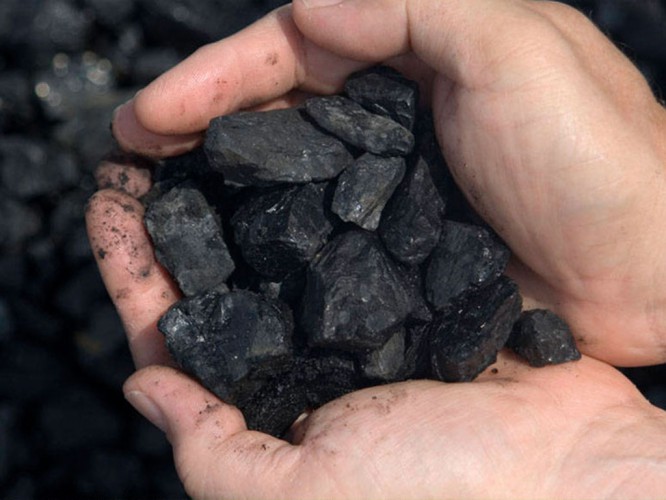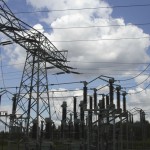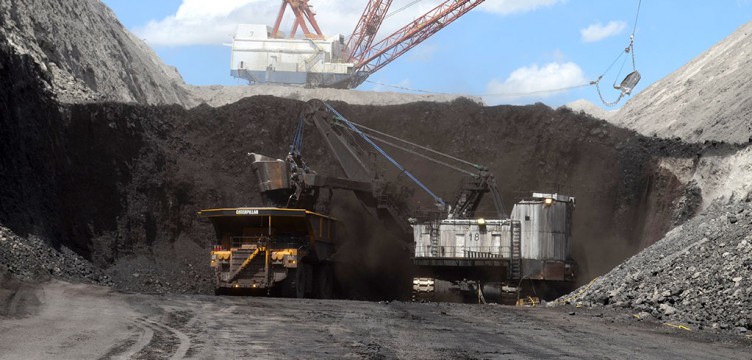 Wyoming, the nation’s leading coal producer since 1986, provides about 40% of America’s coal through the top 10 producing mines located in the Powder River Basin. Most Wyoming coal is sub-bituminous, which makes it an attractive choice for power plants because it has less sulfur and burns at around 8,400 to 8,800 BTUs per pound. Wyoming coal is considered clean burning, which means it is better for the environment. Wyoming coal has steadily gained a growing share of the nation’s total electricity over the past few decades for a variety of reasons.
Wyoming, the nation’s leading coal producer since 1986, provides about 40% of America’s coal through the top 10 producing mines located in the Powder River Basin. Most Wyoming coal is sub-bituminous, which makes it an attractive choice for power plants because it has less sulfur and burns at around 8,400 to 8,800 BTUs per pound. Wyoming coal is considered clean burning, which means it is better for the environment. Wyoming coal has steadily gained a growing share of the nation’s total electricity over the past few decades for a variety of reasons.
- It’s more affordable than Eastern coal and other fuels.
- There are huge reserves in the state.
- Wyoming’s supply of coal is reliable.
- Wyoming’s low-sulfur coal can be produced and used in compatibility with the nations’ environmental objectives.
2020-21 Concise Guide to Wyoming Coal
2018 Wyoming Coal Production and Employment Data
Wyoming Coal Production – 1912 to 2018
Origin
The majority of Wyoming’s coal formed between 50 and 58 million years ago from peat that collected in vast swamps that often covered a thousand square miles and lasted for thousands of years. Peat is woody plant material that falls into the swamp which soon decays into a blackish, carbon rich gel layer at the bottom of the swamp. The thicker the gel layer, the thicker the coal seam will be. To become coal the gel layer must be heated. This comes from rising geothermal heat trapped by the insulating effect of the thousands of feet of sediment that buried the peat swamp. When heated to 150 degrees Fahrenheit, the gel begins to change into coal. The higher the temperature and the longer the time the greater the heat value of the coal.
Wyoming’s peat collected in fresh water swamps, so it has very little sulfur resulting in our valuable low sulfur coal. The Powder River Basin’s Fort Union and Wasatch coal formations cover over a thousand square miles in northeastern Wyoming and include low sulfur, low ash coal beds up to 250 feet thick. Currently most Wyoming coal is mined from coal seams 100 feet thick. These are some of the world’s largest and thickest coal seams.
Energy Access Key to Better Life
Coal Facts

- Composition: Carbon, hydrogen, sulfur, oxygen, nitrogen
- Wyoming’s coal is low-sulfur and more environmentally friendly than other forms of coal.
-
- Coal isn’t technically a mineral, it’s a black, burnable rock and is considered a fossil fuel.
- The coal deposits in the Powder River Basin are among the largest in the world.
- A pound of coal supplies enough electricity to light ten 100-watt light bulbs for one hour.
-
By-The-Numbers
- 40% Amount of America’s coal that comes from Wyoming.
- 277 Million – Tons of coal that Wyoming mines produced in 2019.
- 5,319 Number of people Wyoming coal mines employed in 2019.
- 165 billion Amount of recoverable coal in tons contained in the Powder River Basin in Wyoming.
- 20 lbs The amount of coal each person in the U.S. uses every day.
Types of Coal
Coal is commonly divided into four “ranks” based primarily on the heat content.
Lignite: Lignite (often called brown coal) is brownish-black with a high moisture content. It has the lowest heat value. Lignite ranges from partially decayed peat to a final gel-like material. Lignite mines in the U.S. are located primarily in Montana, North Dakota, Louisiana, and Texas.
Sub-bituminous coal: Sub-bituminous coal forms from the lignite gel that has been heated to at least 1500 F. It is harder, blacker, and has a higher heat content than lignite. Wyoming’s coal is sub-bituminous. Major reserves of sub-bituminous coal are also found in Montana, Colorado, New Mexico, Washington, and Alaska.
Bituminous coal: Higher, longer lasting temperatures acting on sub-bituminous coal result in the formation of bituminous coal). Bituminous coal (often called hard coal) has a higher heat content than lignite or sub-bituminous. In the U.S., bituminous coal is mined primarily in Appalachia and in the mid-western states of Iowa, Illinois, Indiana and Ohio.
Anthracite coal: Anthracite (also called hard coal) was formed when bituminous coal underwent even more heat over a longer time and is usually associated with mountain building forces. Though rare, anthracite has the highest heat content. Pennsylvania’s anthracite coal seams are the largest in the world.
Mining & Processing
Coal in Wyoming is uncovered and removed by large machines in a process called surface mining. Before the coal can be removed from the ground, the topsoil and dirt above it is removed using scrapers. This soil is usually removed ahead of the pit and carried behind to place on top of reclaimed areas or backfill. The dirt that lays on top of the coal (overburden) follows the same pattern. The overburden is approximately 120 feet thick and is excavated in three, 40-foot benches. After the overburden is removed, it’s carried behind the pit and placed in the spot where coal was removed. Now the coal is exposed and can be dug out. Once the coal has been mined, it’s processed. Processing begins in a preparation plant where it’s washed and cleaned to remove contaminants like rocks, ash, sulfur, and other substances. After cleaning, the coal goes through a variety of processes including the removal of foreign material and screening for size. Large pieces will be crushed or pulverized into a more manageable and useful size. After the coal is processed, it is cleaned again and transported by trucks and trains to wherever it is needed. In the case of Wyoming coal, it is transported to more than 30 states.
Reclamation
Once the coal is removed, the process to reclaim the land begins. This is known as contemporaneous reclamation. The reclamation process includes back-filling the void with overburden, contouring the filled surface, replacing topsoil, preparing the seedbed and sowing approved see mixtures, and monitoring plant and fauna. Reclamation is done in stages and is overseen by highly trained specialists and environmental engineers employed by the mines, as well as state and federal agencies to ensure compliance with laws.
Award Winng Reclamation – Peabody Energy’s North Antelope Rochelle Mine.
To date, approximately 47 percent of land in Wyoming disturbed by coal mining has been reclaimed or is in the process of being reclaimed. The remaining 53 percent consists of active mine sites, facilities and stockpiles.
Uses
 Coal supplies more than half of the electricity in the nation. Consider the following statistics: Each person in the U.S. uses 20 pounds of coal every day and 8 out of 10 tons of coal are used to produce electricity. A pound of coal supplies enough electricity to light ten, 100-watt light bulbs for one hour. Coal is also widely used in U.S. industries and manufacturing plants to make chemicals, paper, ceramics, and a variety of metal products. It is an important source of coke for the steel industry, and coal by-products are used to make linoleum, medication, detergents, perfumes, food flavorings, fungicides, insecticides, solvents, and wood preservatives.
Coal supplies more than half of the electricity in the nation. Consider the following statistics: Each person in the U.S. uses 20 pounds of coal every day and 8 out of 10 tons of coal are used to produce electricity. A pound of coal supplies enough electricity to light ten, 100-watt light bulbs for one hour. Coal is also widely used in U.S. industries and manufacturing plants to make chemicals, paper, ceramics, and a variety of metal products. It is an important source of coke for the steel industry, and coal by-products are used to make linoleum, medication, detergents, perfumes, food flavorings, fungicides, insecticides, solvents, and wood preservatives.

